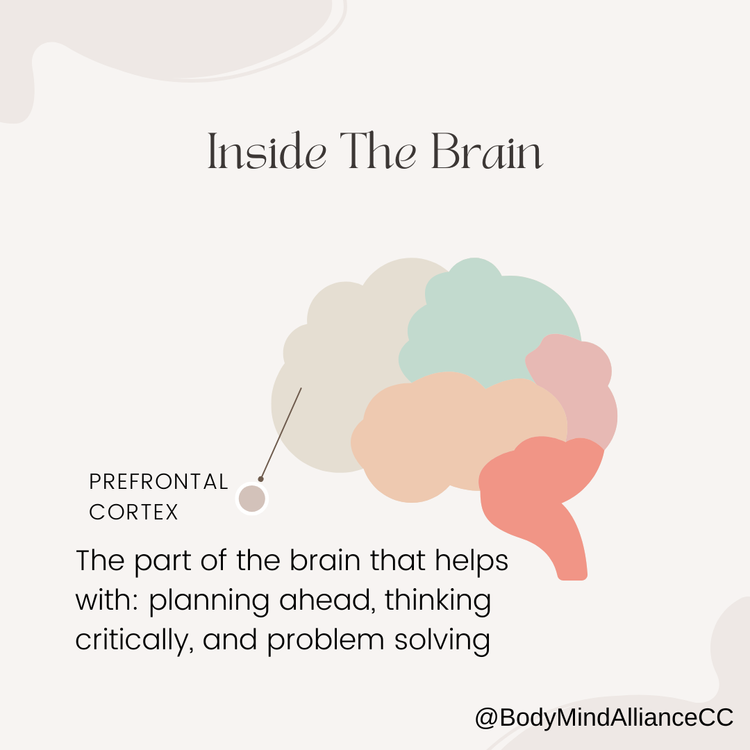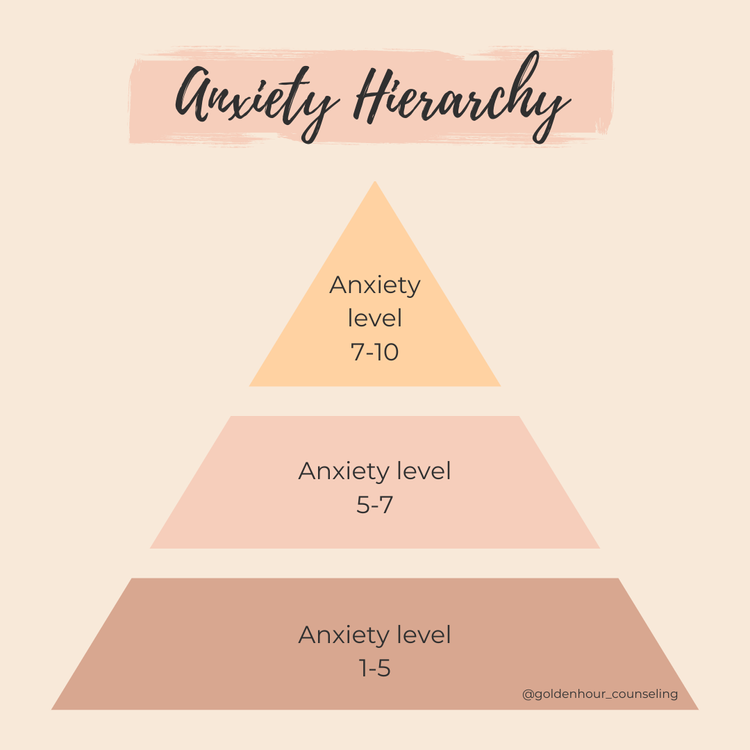Guest Blog Post: How to Cope With Anxiety
This post is written by my esteemed colleague Natasha Deen, LCPC, NCC who is a practicing therapist in Maryland. Natasha specializes in depression, anxiety and trauma. Feel free to check out her website goldenhour-counseling.com or Instagram @GoldenHour_Counseling. Without further ado, here is the article:
How to Cope with Anxiety
By Natasha Deen, LCPC, NCC
I'm sure many of you have heard…
“Engage in your hobbies.”
“Try exercise.”
“Distract yourself.”
“Just do some of your favorite things!
However, when you feel like you're about to have a panic attack or can't stop worrying about a problem it may feel unrealistic to do any of the above.
That’s because we’re doing it wrong.
It’s impossible to expect that we can go from a place of overwhelming anxiety to baking cookies, dancing, or doing yoga.
Everything in life, including anxiety, falls on a spectrum.
We can think of anxiety on a scale of 0, no anxiety, to 10, overwhelming anxiety. Anxiety can range from feeling nervous about thoughts that won’t leave your mind, all the way up to a panic attack. Because there is a range of anxiety, there are also a variety of ways to cope, depending on the intensity of the feeling.
When our bodies feel anxious (i.e. shakey, increased heart rate, hyperventilation, feeling like you can’t breathe, etc.) our minds go into panic mode. However, the opposite can be true as well: if our minds are filled with negative or racing thoughts, then our bodies experience that anxiety as well. In the more intense moments of anxiety, it can be easier to calm our bodies than it is to calm our minds.
When we feel anxious, we can enter into fight or flight mode.
As sophisticated as our brains are, it has a hard time differentiating between real and perceived danger. Our anxious thoughts are perceived danger, but our brains interpret it as a physical threat and prepare our bodies to fight or flee. When we are in fight or flight mode, we lose access to the prefrontal cortex of our brain, the part of our brain that sits right behind our forehead.
The prefrontal cortex is responsible for higher executive functioning such as planning ahead, thinking critically, and problem solving. Therefore, when someone is experiencing more intense anxiety, they are unable to think through situations in a logical manner.
I created the image below to give you an idea of what to do depending on where you fall on the scale of 0 to 10.
If you are on the lower end of the spectrum, a 1-5…
Diversions and cognitive coping skills may be needed. Diversions are things we engage in to distract ourselves and shift our mood, like participating in our hobbies. For example, watching our favorite comedy show or listening to songs that make us want to sing and dance along. Coping skills on the other hand, are things we do to help us process how we’re feeling. This can look like journaling or going for a walk.
If you are more in the middle, 5-7…
You could benefit from engaging in grounding or breathing techniques. Grounding is a way to help you detach from the thoughts running rampant in your mind and shift your focus to your body and your environment. This often helps us feel more centered because we aren’t allowing our thoughts to send us into a negative spiral. You can learn more about grounding here.
Breathing techniques also help us shift our focus to our bodies. It can help calm our bodies down when we’re experiencing physical symptoms of anxiety. Once we calm our bodies, our minds will calm as well. There are a variety of different breathing techniques to try out and see what works best for you. View one of my favorite ones here.
If you’re on the higher end of the spectrum, 7-10, closer to a panic attack…
The most effective thing to do is engage in breathing techniques. When you’re at this level of distress, your brain thinks that you are in danger and your prefrontal cortex may be completely “offline.” To bring it back online, your body and mind has to be calm enough so your brain knows you’re safe and don’t have to be in fight or flight mode.
Image of a graph on a neutral background. Title reads Anxiety Hierarchy. The graph is a visual representation of the body of the blog. For anxiety level 1-5: focus on diversions, coping skills For anxiety level 5-7: breathing techniques, grounding
Keep in Mind
It's important to practice grounding and breathing techniques before you're anxious and make it a habit. When you’re in a state of panic, you’re not going to be able to think logically and remember to utilize these techniques. It's far more effective to rely on a habit you’ve created because you won’t have to think twice about it; it becomes automatic.
It’s important to have an idea of where you are on the anxiety spectrum to determine the most effective course of action. Remember, this is only a portion of what coping with anxiety looks like. Anxiety is deeper than feeling stressed and overwhelmed. These techniques are beneficial, but will not solve deeper issues. If you are struggling to manage your anxiety, reach out to a therapist.
Wishing you the best in your healing journey. Stay Golden!
~Natasha
Natasha Deen, LCPC specializes in working with BIPOC adults who are struggling with feeling disconnected and misunderstood to stop being tied down by the past and worrying about the future and begin living authentically.




